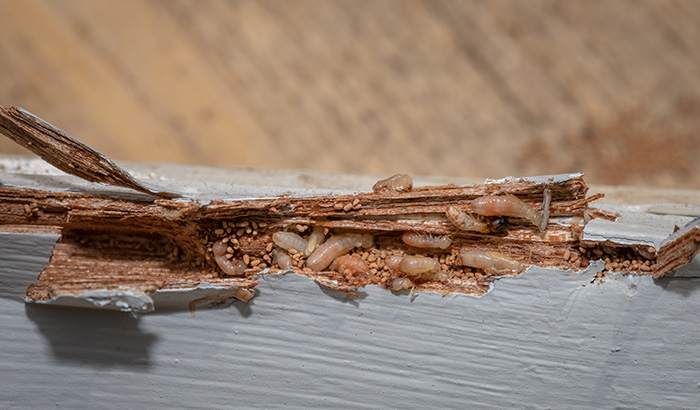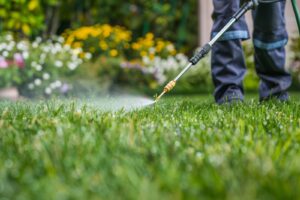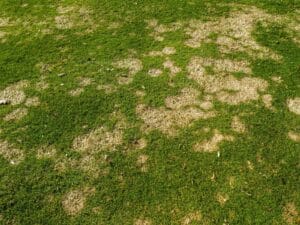Pest control is essential to maintaining a safe, healthy, and comfortable living environment. It’s not just about preventing the occasional creepy-crawly visitor; it’s about safeguarding your property and peace of mind. In this blog, we’ll explore the crucial signs that indicate it’s time to consider pest control measures.
1. Property Damage
Pests can wreak havoc on your home and its structures in various ways. Let’s delve into some specific examples of pests that can cause significant property damage.
- Termites are notorious for silently chewing through the wooden framework of your house, weakening its integrity over time.
- Rodents, on the other hand, can gnaw on electrical wiring and insulation, posing both safety and efficiency risks.
- Carpenter ants are skilled at tunneling through wood, leading to weakened structural support. If you’ve ever had an unwelcome infestation of carpenter ants, you’ll know how concerning this can be.
- Wood-boring beetles can leave unsightly and structurally compromising holes in wooden furniture and fixtures.
Neglecting pest control can have profound financial consequences. Repairing the structural damage caused by pests can be a costly endeavor. Additionally, when pests compromise the safety and integrity of your home, it may lead to a decrease in property value.
By addressing pest issues promptly, you can prevent expensive repairs down the road and maintain the value of your home.
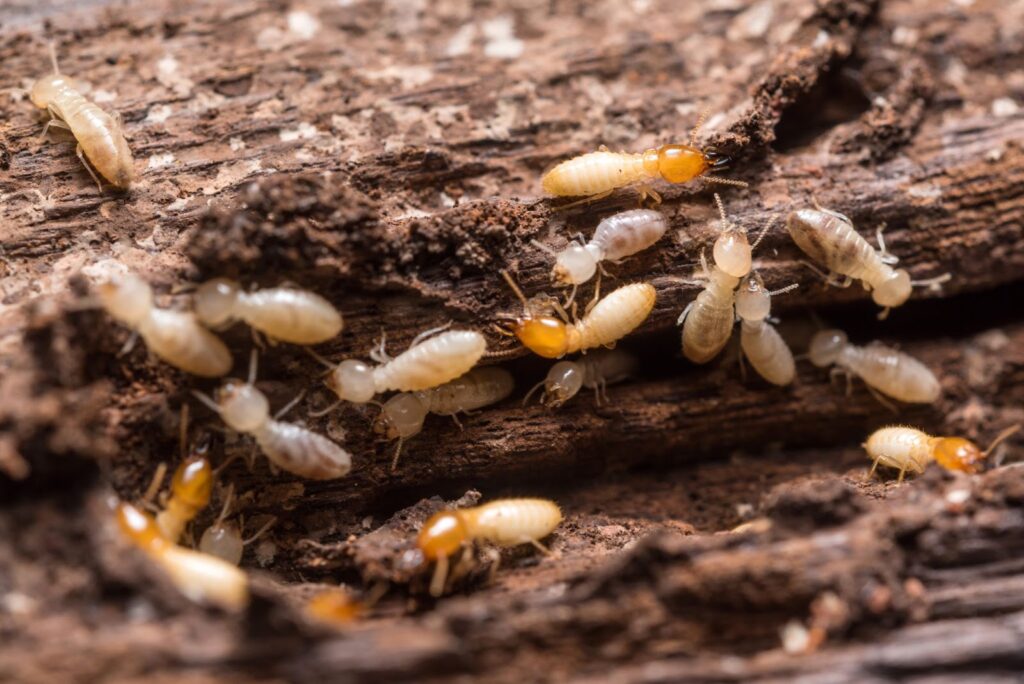
2. Increased Pest Activity
Pest activity isn’t static; it ebbs and flows with the seasons. Understanding these seasonal variations is critical to effective pest control. Different pests are more active during specific times of the year, so being aware of these patterns empowers you to take proactive measures.
For example, mosquitoes thrive during the warm summer months, while rodents may seek shelter indoors when the weather turns cold.
Weather plays a significant role in pest behavior. Temperature, humidity, and precipitation changes can trigger pest activity shifts. Heavy rains might drive ants indoors to search for dry shelter, and warm weather can encourage a surge in the mosquito population.
You can stay one step ahead by paying attention to weather forecasts and understanding how pests respond to environmental changes and prevent them from becoming a bigger pest problem.
3. Strange Noises and Odors
Pests often leave behind subtle yet distinct clues in the form of strange noises and odors. These sensory signals can be your early warning system, helping you identify a potential pest problem before it escalates.
Pests can emit distinctive odors that may be unpleasant or unusual. For example, cockroaches can release a musty, oily odor, while rodents often leave behind a pungent, musky scent. These odors can be particularly noticeable in enclosed spaces like cupboards, basements, or crawl spaces.
Different pests are associated with specific noises and odors. Recognizing these associations can help you narrow down the type of pest you might be dealing with:
- Rodents: Rats and mice are notorious for their audible movements, including scratching, gnawing, and scuttling sounds.
- Insects: Termites and ants can create rustling or tapping sounds when they’re active within wooden structures.
- Cockroaches: The musty odor of cockroaches often signals their presence, and you may even detect a faint, oily residue where they congregate.
- Wildlife: If you hear loud, persistent noises like thumping or scratching in your attic or walls, you may have wildlife intruders like squirrels, raccoons, or birds.
So, how can you identify and address these signs of unusual noises and odors?
- Listen Closely: Listen to any unexplained noises, especially during quiet hours. Use a stethoscope or put your ear against walls and floors to pinpoint the source.
- Follow Your Nose: When you detect unfamiliar odors, investigate the source carefully. Check hidden or less-frequented areas of your home.
- Seek Professional Help: If you suspect pests but can’t locate the source or are unsure of the type of pest, it’s advisable to consult a pest control expert. They have the knowledge and tools to identify and address the issue effectively.
Identifying and addressing strange noises and odors can prevent a problem from becoming a full-blown pest infestation. It’s a proactive step towards maintaining a pest-free and comfortable living space.
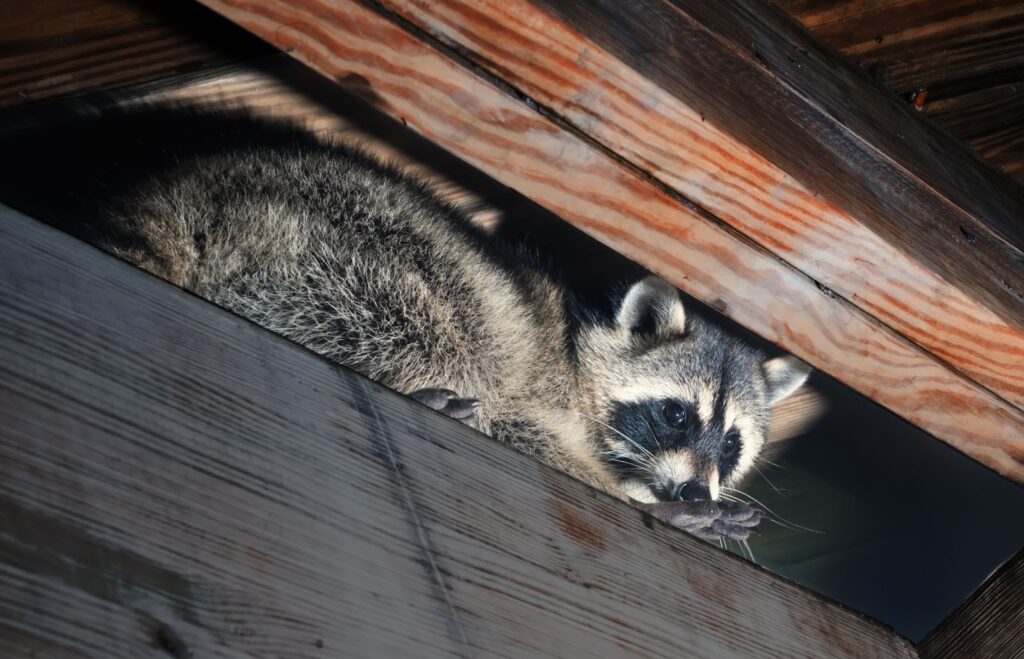
4. Droppings and Damage
Pests often leave behind two unmistakable signs of their presence: droppings and damage. These telltale clues can provide crucial insight into the extent of a pest problem in your home.
Pest droppings are typically small, dark, and pellet-like. They serve as a clear indicator of a pest’s location and activity. The size and appearance of the droppings can vary depending on the type of pest. For example, mice droppings are tiny, resembling rice grains, while larger pests like raccoons leave larger, tubular droppings.
Damage from pests can manifest in various forms, from gnawed wires and wood to shredded insulation and chewed packaging. Identifying physical damage caused by pests is a red flag that shouldn’t be ignored.
To detect and confirm the presence of pests using droppings and damage as evidence, follow these steps:
- Visual Inspection: Carefully examine areas where pests are likely to leave droppings, such as corners, cupboards, and hidden nooks. Use a flashlight to spot droppings in dark or concealed spaces.
- Check for Gnaw Marks: Inspect wooden surfaces, electrical wires, and cardboard for signs of gnawing or chewing. Rodents and some insects, like termites, are notorious for causing this type of damage.
- Inspect Food Packaging: If you notice holes or damage to food packaging, it’s a sign that pests may have infiltrated your pantry or kitchen.
- Look for Nesting Materials: Some pests, like birds or rodents, may leave behind nesting materials, such as twigs, paper, or insulation, in the areas they frequent.
When you encounter droppings and damage, it’s important to act quickly. Identifying signs early can help prevent a full-blown pest infestation and save you time, money, and stress in the long run.
Timely intervention prevents further damage to your home or belongings and saves you money. Don’t hesitate to seek professional pest control help if you discover these signs; it’s a step toward a pest-free and worry-free living space.
5. The Health Risks
It’s not just about creepy crawlies; pests can pose real health risks to you and your beloved pets. Many pests, like mosquitoes and ticks, are notorious vectors of diseases. They can transmit illnesses like West Nile virus, Lyme disease, and malaria. Your furry friends can also be susceptible to diseases carried by pests.
Pests like dust mites, cockroaches, and rodents can trigger allergies and exacerbate respiratory conditions like asthma. Their droppings, shed skin, and saliva can become allergens affecting indoor air quality.
Pests like bed bugs, fleas, and stinging insects can leave you and your pets with painful, itchy bites or stings. In some cases, these bites can lead to severe allergic reactions.
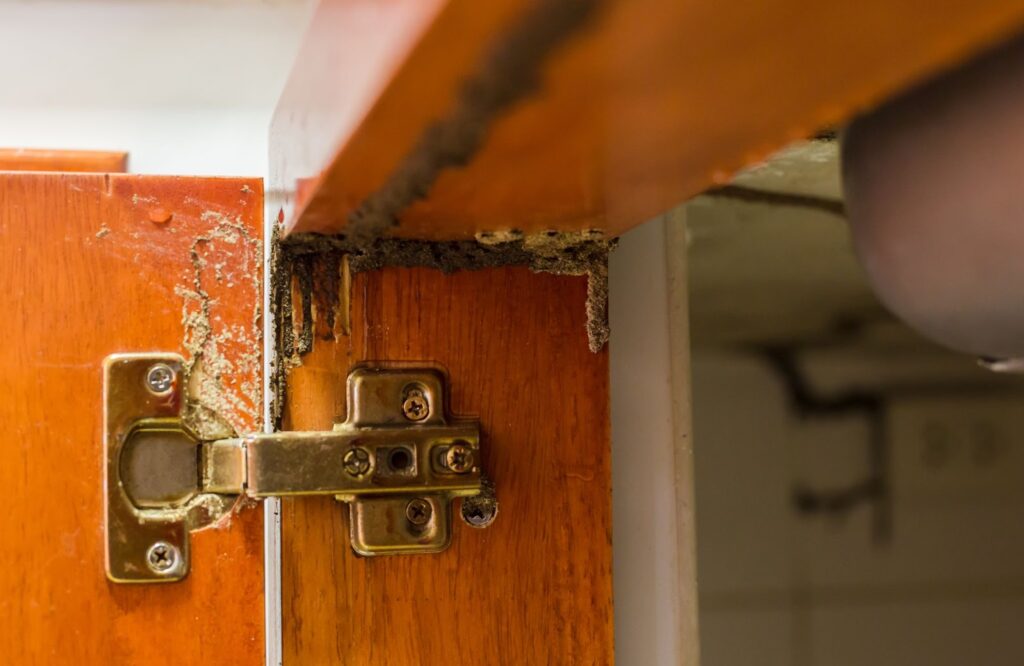
Summit Lawn & Pest Control
If you are dealing with pest infestations in Orem, Utah, don’t hesitate to call Summit Lawn & Pest Control immediately. With a decade of experience serving Orem and Utah County, our team is dedicated to ensuring your pest issues are resolved promptly and effectively.
We have the knowledge, tools, and commitment to make your home pest-free so you can enjoy a safe and comfortable living environment once more. Don’t let pests take over your home – call 801-473-9926 for a free estimate.
Contact Summit Lawn & Pest Control today for a pest-free tomorrow!


